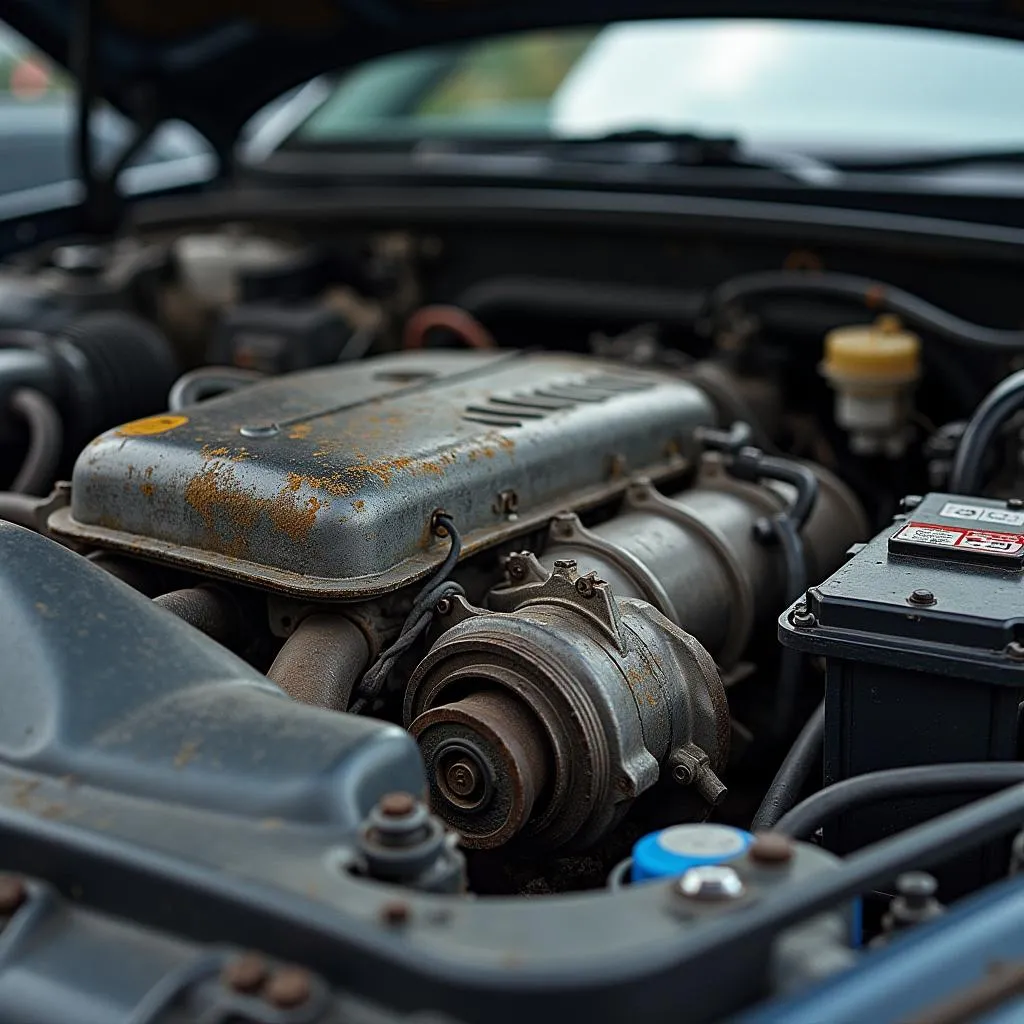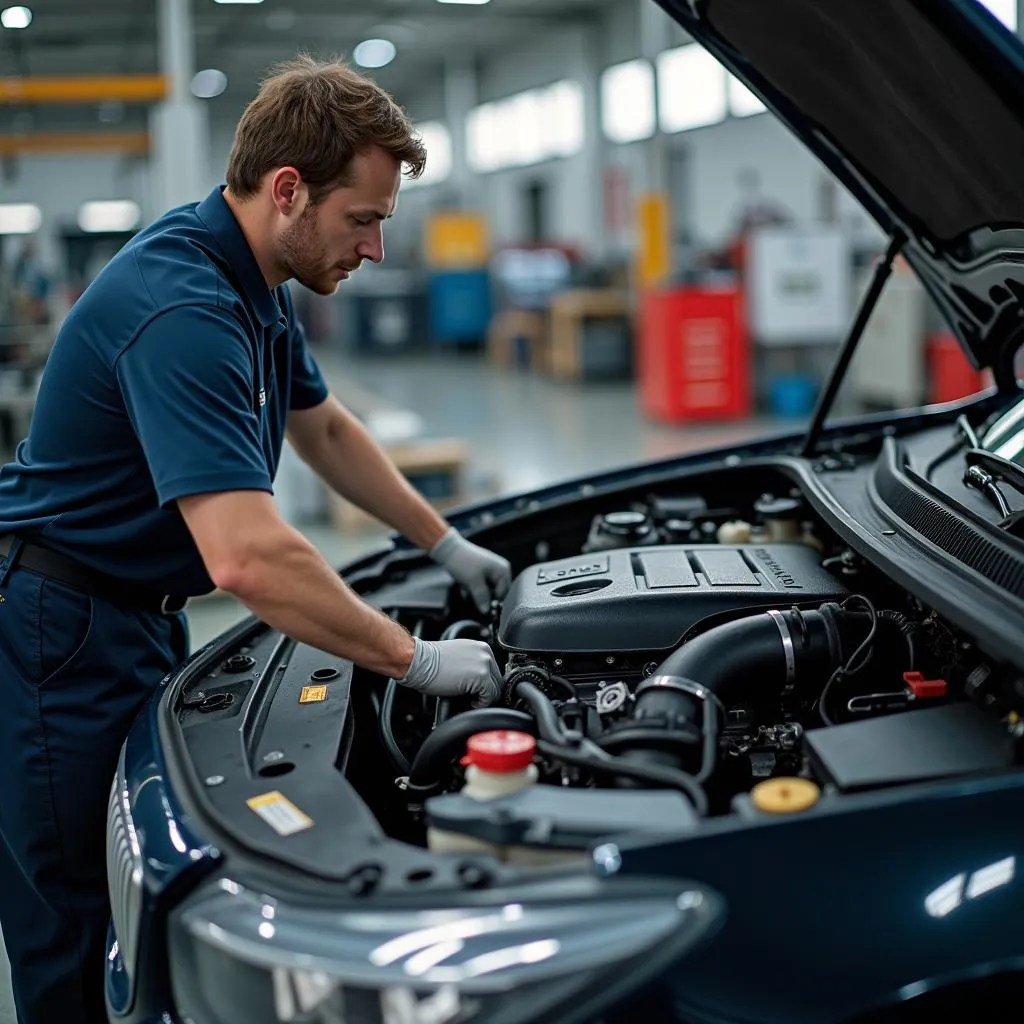A defective engine is every driver’s nightmare. The reasons for this can be manifold and range from normal wear and tear to more severe damage. In this article, we shed light on the most common causes of a defective engine, the symptoms that indicate such a defect, and show you what possible solutions you have.
The fear of high repair costs and a long vehicle downtime is significant. But don’t panic! With the right knowledge and a bit of luck, the problem might be easier to solve than you think.
What Does “Defective Engine” Actually Mean?
“Defective engine” is a broad term that can encompass many different issues. Essentially, however, it means that the engine is no longer functioning correctly and cannot deliver its full power.
“A defective engine can have many faces,” says Dr. Ing. Helmut Schmidt, an automotive expert and author of the book “Modern Engine Technology”. “Sometimes a defect is announced by unusual noises, sometimes by a loss of performance or increased oil consumption. It is important to take these warning signs seriously and have the vehicle checked by a professional as soon as possible.”
 Common causes of a bad or defective car engine
Common causes of a bad or defective car engine
Common Causes of a Defective Engine
Engine damage can have many causes. Here are some of the most common:
- Lack of maintenance: Regular inspections and oil changes are essential for a long engine life. Neglecting maintenance can lead to increased wear and ultimately engine damage.
- Overheating: An overheated engine is a warning sign that should never be ignored. Overheating can be caused by a lack of coolant, a faulty thermostat, or a defect in the cooling system itself.
- Timing belt failure: The timing belt ensures the synchronization of the crankshaft and the camshaft. If the timing belt breaks, it can lead to catastrophic engine damage.
- Lack of lubrication: Without sufficient lubrication, the engine experiences increased friction and heat generation, which can lead to severe damage to moving parts.
- Defective cylinder head gasket: The cylinder head gasket seals the combustion chamber. If it is defective, coolant and oil can enter the combustion chamber, potentially causing engine damage.
 Car being serviced or repaired in a professional auto workshop
Car being serviced or repaired in a professional auto workshop
Symptoms of a Defective Engine
But how do you recognize a defective engine? The following symptoms can indicate engine damage:
- Unusual noises: Clicking, grinding, or whistling sounds from the engine bay can be signs of a defect.
- Loss of performance: If the engine no longer delivers its full power, this can indicate engine damage.
- Increased oil consumption: Severely increased oil consumption often indicates worn piston rings or valve stem seals, which can lead to engine damage.
- Smoke development: Blue smoke from the exhaust indicates oil burning, while white smoke can indicate coolant burning. Both can be signs of engine damage.
- Warning lights: If the check engine light or the oil warning light illuminates, you should take this seriously and have the vehicle checked as soon as possible.
Solutions for a Defective Engine
The possible solutions for a defective engine depend heavily on the type and extent of the damage. In some cases, it is sufficient to repair or replace individual components. In other cases, an engine overhaul or even an engine replacement may be necessary.
“The costs for an engine repair can vary greatly,” explains Hans Meier, an experienced automotive master mechanic from Berlin. “It is therefore important to obtain several quotes beforehand and compare the costs carefully.”
Conclusion
A defective engine is frustrating and can involve high costs. However, with regular maintenance and the right behavior in case of irregularities, much damage can be avoided or at least mitigated. If you notice signs of engine damage, do not hesitate to contact a workshop you trust.
Do you have questions about your vehicle or need assistance with troubleshooting? Contact us! Our experts at AutoRepairAid.com are here to help you with advice and support.

